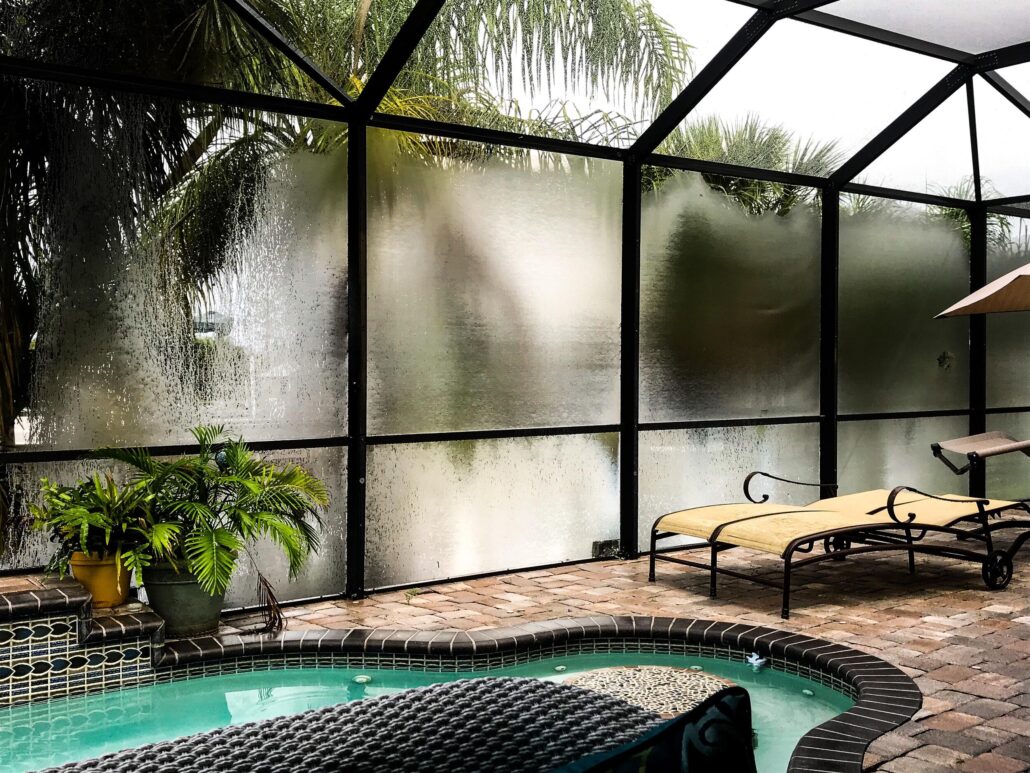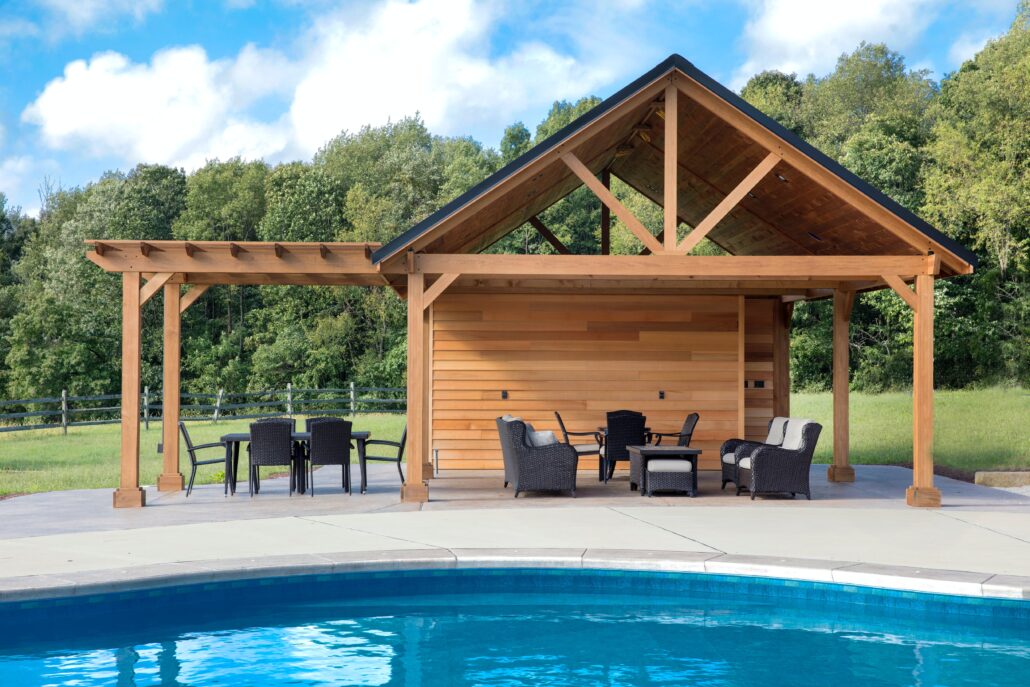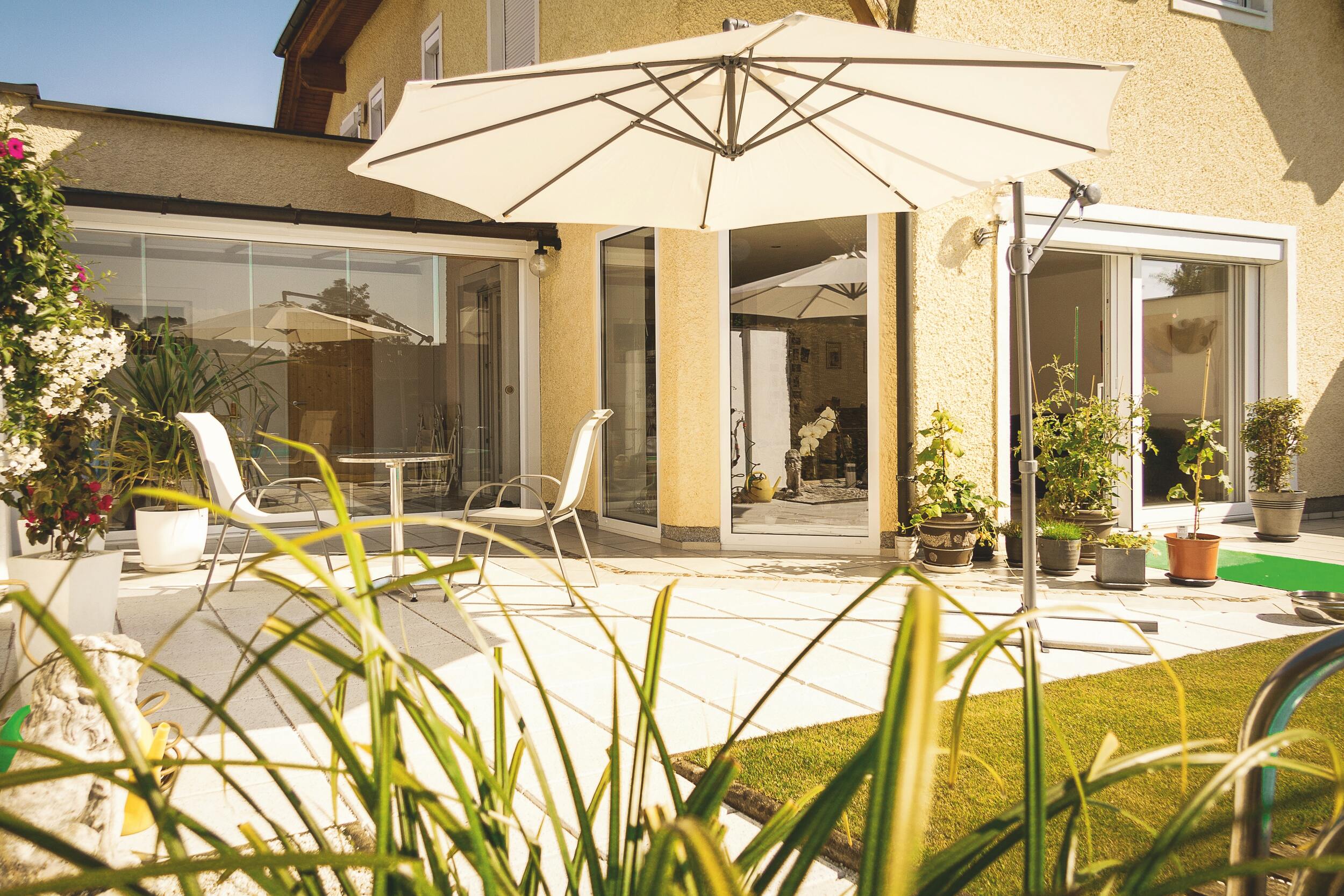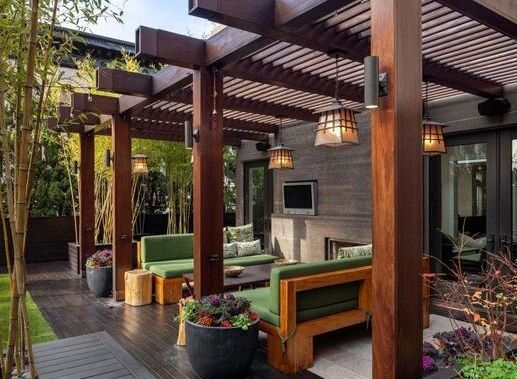Designing a Pergola for All Lawn Types
We’ve found a huge spike in the use of pergola as many people explore for options to enhance their garden area. Pergolas are described as the ability to create unique and functional landscape design while keeping a tiny footprint that fits perfectly into modest yards. Our creative team brings out a detailed guide for one of Air- Grow’s popular hardscaping ideas, along with costs, equipment, designs, and variations.
What exactly Pergola is?
Pergolas are external buildings that’s been around for ages, firstly emerging in Egypt in 1400 BC. Seventeenth-Century Romans widely used them throughout the Italian Renaissance. They are typically made up of pillars that are sustained by an open-structured ceiling without any boundaries beneath them.
Pergolas: What Are Their Advantages?

Pergolas are created to eliminate the sun’s harsh rays while still allowing sunlight and refreshing air to enter. They typically don’t shade the sun; however, certain designs have louvers or ceiling covers for the complete shade.
Pergolas include a peaceful garden area that is both sheltered and airy. The open sides keep stunning design links with outside, letting the area underneath the roof appear larger than the specifications. Many pergolas are built across external places that would be used for a long time, such as cooking spaces, outdoor kitchens, or sitting places.
Structural elements are usually central in a gardening design and act as style indicators. Modern pergola can make all the other elements of your yard look more contemporary. In reality, pergolas provide the infrastructure for mounting various accessories (which we’ll discuss in the next section).
How Pergola’s are constructed?
The top prominent pergola components are shown below:
1. Wood:
- Pure and beautiful.
- Simple to use.
- Use any tint or color you like.
- It’s simple to modify into traditional-style decorative elements.
- Ideal for a do-it-yourself or personalized setup.
- It used to be more reasonable, however wooden rates have risen. Pergolas made of wood are now a mid-to-high-priced option.
- The materials that requires the most care and is the less enduring. After a year or so, a new layer of coating is required to protect wooden surfaces from the environment.
2. Fiberglass:
- Texture is smooth and finer finished than hardwood.
- Almost any tint could be used.
- Available in various styles; however, it appears best in contemporary designs.
- Extremely long-lasting and low-maintenance.
- It can cover much greater distances than wood, at least 26′ in certain cases, which reduces the number of posts.
- Historically, it was more costly than lumber; however, it’s priced at a competitive level with aluminum and wood.
3. Aluminum:
- Almost similar to fiberglass.
- Sturdy, lightweight, and nearly maintenance-free.
- The sleek look is best suited to contemporary styles.
- The colours are powder-coated to eliminate fading over time.
4. Vinyl:
- Variant with such a lower price
- The Pergola has a less appealing look than other pergola components.
- The majority of hues are confined, and light colored tones being the more popular.
- Maintenance-free. However, this is not as durable as other materials.
Air-Grow is not a typical source of pergolas made of vinyl (see below for a few of our most popular affordable alternatives)
What does the price of Pergolas?
The kind of Pergola you get, besides from the substance, is premade. The cost of a made -to- order house will be higher. Pergolas that are prefabricated are often less expensive than those that are specially made.
1. Pergola Kits
The most expensive prefabs are kits. Pergola kits are much less robust than customized pergolas, but they are feasible for many people on a budget Kits are most pricey prefabs. Pergola kits are less durable than custom pergolas, but they are more reasonable for several individuals on a strict budgets. Although most kits assure to be DIY-friendly, do not even expecting these to be easy to put together, and they generally won’t be.
2. Prefabs
Stronger prefabricated pergolas need specialized setup, whether by a qualified expert or by the supplier’s workforce. Prefabricated fiberglass, metal, and wooden pergolas costs between ₹5 lakh and ₹10 lakh for a standard-sized pergola, including setup and shipping. In addition, adding additional accessories can cost up to ₹5 Lakh over the typical price.
It is a superior better item which is highly enduring & would seem like a long-lasting landscaping addition at a premium price. There’s also the option of assuring or adding features that pergola kits mayn’t really be fit in.
3. Custom
The cost of a customized pergola varies. Pergolas are inexpensive, however they usually cost around ₹10 lakh. It is possible to maintain prices down by keeping layouts basic. Complicated layouts quickly raise expenses due to more work..
How Are Pergolas Structure Built?

In most cases, implementation is far more complex than it seems. The spikes must be driven into the ground. For most pergolas, this implies installing subterranean concrete pillars for every pillar, as well as for lightweight kits, it normally involves attaching posts to already-constructed decks and concrete slabs.
To fit prefabricated planks, anchoring stakes should be horizontal and aligned properly. They must be separated by half an inch, and you need to anchor the post. They must be spaced by 0.5 cm, and also the stake must be secured. And this is why, even with many pergola kits, we suggest letting an expert assemble your pergola. The cost of contractor installation is typically between ₹20000 and ₹50000, in addition to the price of buying the Pergola; however, it’s typically worth it.
Which Pergola types are offered?

We see pergolas divided into two large buckets: modern and traditional. In essence, traditional pergolas are decorated with ornaments while modern ones don’t.
- Traditional pergolas usually include ceiling beams protruding from the frame of the Pergola (these ornamental outcrops are known as “rafter tails”). Posts can be either round or square and include ornamentation, whether with tapering sides or strong bases (such options can add to the overall cost). Traditional pergolas with higher-end features may have posts sinking into square bollards with stone or brick veneer. These decoration features are common to the design of wood pergolas. Some pergolas made of fiberglass and vinyl offer appealing versions of these ornamental features. Just be certain to purchase a high-quality product.
- Modern pergolas are modern and deliberately devoid of ornamentation. The angles are 90 degrees, and the columns are rectangular. It is possible to skew them to appear more rustic by opting for the wood model. Modern pergolas made of aluminum or fiberglass have a more polished look. These can be adapted to different styles of design. Modern white pergolas, in particular, can blend into designs that are otherwise quite typical (picture row of boxes wood, or Hydrangea)
What accessories could I put on my Pergola?

Pergolas create a perfect frame for dangling various items, including Solar features. Certain pergolas have adjustable louvers, which allow you to regulate the amount of shade available under the ceiling. It is also possible to attach shading sails and a retractable screen beneath the ceiling to block the incoming light.
1. Windscreens.
Screens that retract can also be lowered from overhead beams, blocking the incoming light or wind from the sides.
2. Outdoor heaters
We love the low-profile Heat strip, which can be mounted on overhead beams.
3. Lighting
String lights placed around or on the ceiling are a budget-friendly alternative. Lights on decks attached to posts can shine upwards or down or both, like the Volt light can do.
4. Plants
In the past, pergolas were used for supporting grapevines. Plant vines in containers near the bottom of posts and let them grow and spread out to the ceiling to create a desirable and cool environment.
5. Fans
Fans that rotate can be particularly great in warm climates.
Is there an alternative to Pergolas?

Pergolas have many advantages; however, they’re not the best choice appropriate for every project. If space isn’t abundant, budgets are tight, or if further changes are planned in the future, pergolas might be too heavy, costly, or long-lasting to be practical. If any of the above scenarios occur, we suggest the following pergola alternatives:
1. Umbrellas
Umbrellas are extremely versatile and can be removed if you’re looking to expand the area’s openness. Crate and Barrel makes a beautiful cantilevered umbrella that lets you have shade over your dining space without the need for a pole to be hung over the table.
2. Trees
Our preferred choice. Trees bring a myriad of benefits to property owners and are highly efficient in providing shade and creating the appearance of a cozy, defined outdoor space. Pergolas are made specifically for this purpose. Plant trees at some or all corners to suggest boundaries and create the boundaries of space. The atmosphere is different from the Pergola, but it’s still beautiful.
3. Shade Sails
They are weatherproof fabrics in triangles or squares suspended to float over outdoor areas gracefully. They are held in place by steel cables attached to existing structures or posts to be secured solidly to the ground. An extremely popular style is to use two triangular sails to significantly over the one. Shade sails are priced differently but generally cost between a few and just a couple of Lakh of rupees once installed (new support posts usually add around ₹20000 to the total cost). There are many shade sail companies available. We suggest you ask your contractor to recommend their preferred local supplier.
Conclusion
A Pergola is a gorgeous addition to any lawn. Its wide open archways and posts create a great place to lounge, eat, and entertain. While a pergola may seem like a simple structure, there are actually a number of factors that go into designing a pergola for any lawn types. Before choosing the ideal location for a pergola, it is essential to take in the surrounding weather, sun exposure, and surrounding landscape. In addition, the budget and desired purpose of the pergola will help determine the best design for it. We hope we have been able to provide some useful insight into the process of designing a pergola for all lawn types. If you have any other questions about designing a pergola, please contact us at harsh267@gmail.com or set up a phone conference call for our staff.










Leave a Reply
Want to join the discussion?Feel free to contribute!